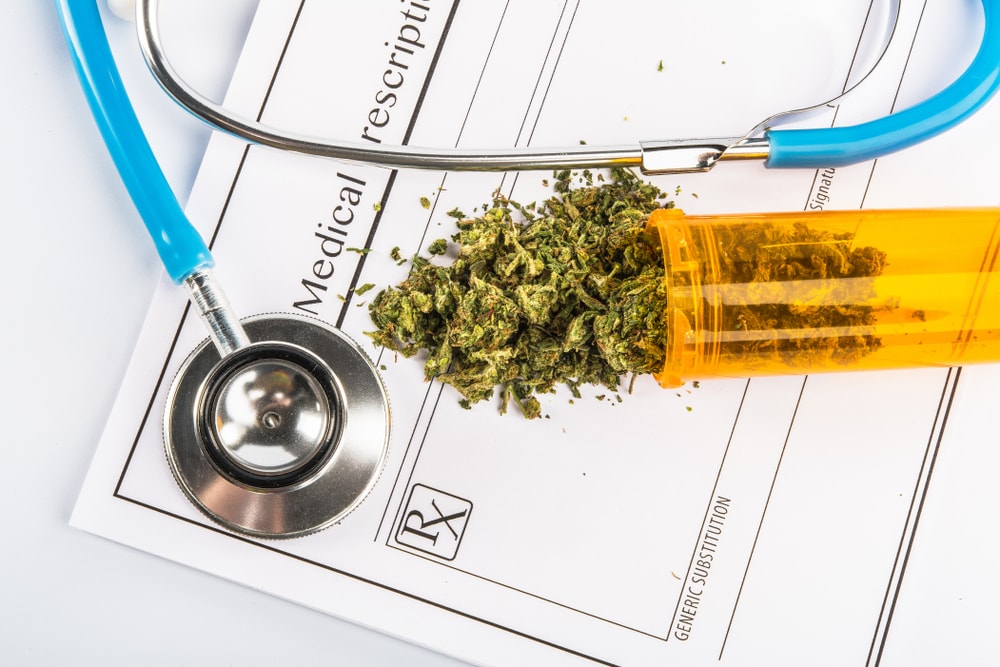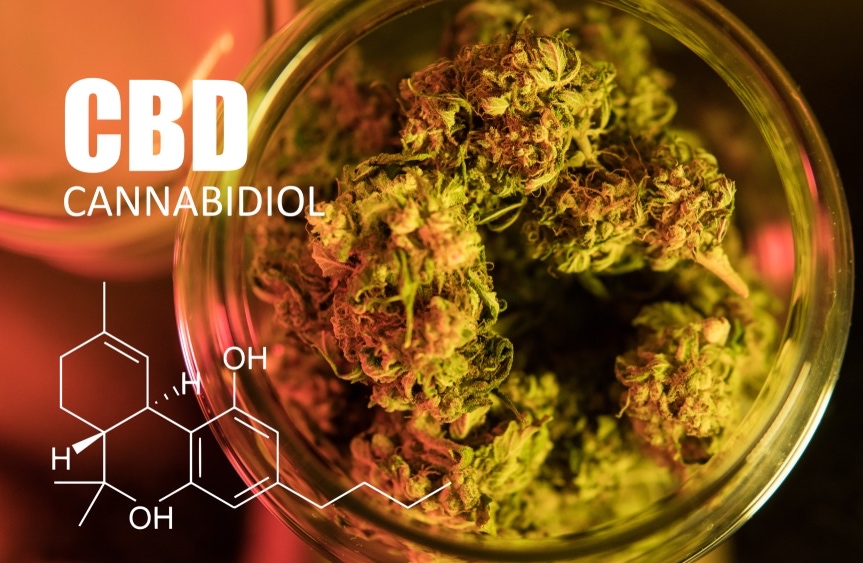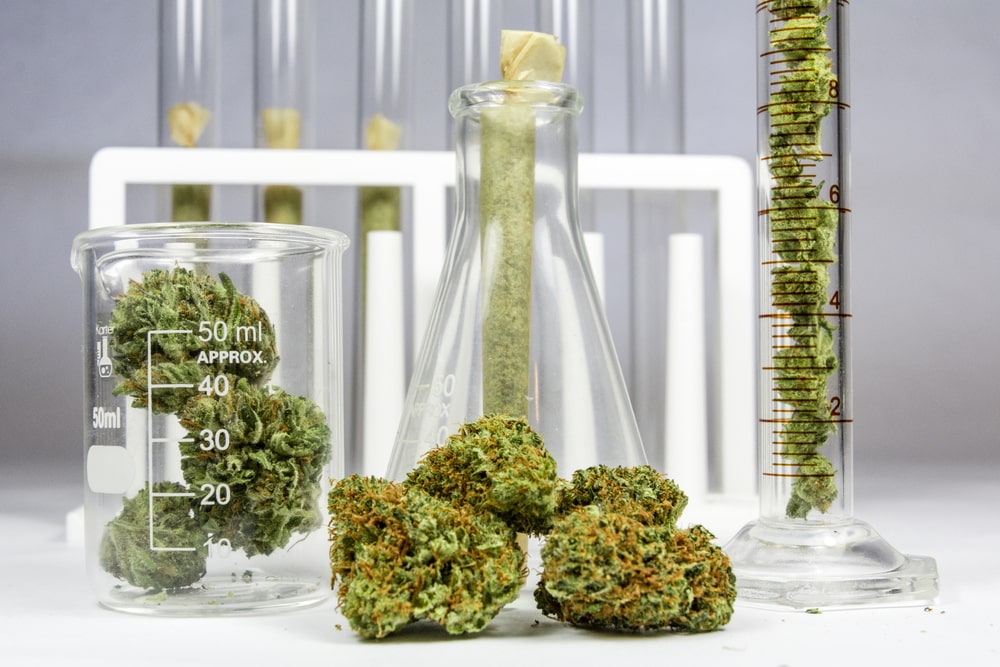Medical cannabis refers to cannabis use for treatment of some diseases and reverse of their symptoms. Medical marijuana can help to reduce nausea in case of chemotherapy, to cure absence of appetite for AIDS patients, to decrease chronicle pains and release muscle spasms, and it has an antineoplastic action.

What’s the difference between medical and usual cannabis?
The difference between medical and usual cannabis is the quantity of tetrahydrocannabinol (THC), the main psychoactive component of cannabis. It’s this substance that affects consciousness move, makes people high and can trigger hallucinations. Usual cannabis can have 5 to 35 % of THC while medical one has maximum of 1%.
Apart from THC cannabis contains cannabidiol (CBD) which has no psychoactive properties. It’s added into food products, cosmetics and oils. It’s cannabidiol that is responsible for medical benefits and helps get rid of pain syndromes.
The medical sort of cannabis contains cannabidiol mainly. When using it people relax and endure pain sensations easier. At the same time the mind doesn’t race, thoughts are not all jumbled together, there is no muscle relaxation and other side effects which appear during usual cannabis smoke.
Usual (recreational) marijuana has a high percentage of tetrahydrocannabinol which has nothing in common with treatment and on the contrary can have negative health effects. Use of recreational cannabis is prohibited in most countries.
Medical marijuana is usually smoked including smoke through a vaporizer. Also cannabidiols are taken for medical purposes in pills, drops, teas, salves, extracts, sprays or inhalations. There are also available synthetic cannabinoids.
What is medical marijuana used for?
- Firstly it’s recommended to oncology patients as it helps remove chemotherapy side effects, to epileptics, people with posttraumatic syndromes, war veterans, Alzheimer's patients.
- The following diseases are considered indications for therapy with medical cannabis in some countries:
- Chronic incessant pains, especially in oncological diseases, degenerative disorders of the musculoskeletal system, systematic rheumatic diseases and immunopathological conditions, neuropathic pains and glaucoma-associated aches;
- Spasticity and pains connected with it in multiple sclerosis or spinal cord injury; spasticity limiting patient’s mobility or respiratory function; hyperkinesis as a result of a neurological disease or other pathological conditions or complications after spinal or brain injuries; neurologic tremor in Parkinson disease and other neurological diseases as defined by a doctor;
- Indigestion, vomit, appetite stimulation during cancer treatment or in AIDS infection;
- Dermatosis and blennosis with cannabis external use;
- Uncontrolled tics, so called Tourette's syndrome.

What are the medical marijuana facts throughout human history?
Many cultures started to use marijuana for various treatment purposes long centuries ago. Use of herbal medical marijuana was known long before the traditional European medicine appeared. Cannabis benefits were first reported in Asian medical practices.
- Shennong Bencaojing of China, the classic of herbal medicine based on 4000 years old traditions, mentions medical cannabis use in case of malaria, rheumatic pain, reproductive system disorders. Hua T'o, the founder of the Chinese surgery, used cannabis compounds as anesthesia. Chinese physicians nowadays use cannabis seeds for a purgative effect.
- Indian healers used cannabis as a medication already around 1000 years B.C. The proposed cases included rheumatism, neuralgia, toothache, epilepsy, hysteria, internal worms, skin infections, impotence or sexual addiction, chest infection, asthma and many more.
- Juice of cannabis seed was used in old Greek and Roman times to cure earache, to remove insects and worms out of ears.
- Avicena, the famous medieval Persian doctor and polymath, listed cannabis in his medical encyclopedia.
- Assyrians treated many cases with cannabis before the Christian Era. That included bruises and swellings, astysia, female disorders, kidney stones, arthritis.
- Old Muslim medicine texts mention cannabis as a medication for earache, as well as digestive, anti-flatulent and diuretic medicine. In Africa they used hemp already in the 15th century in pyrexia, child delivery, toxication, bloody flux, snake bites. Toothache and menstruous colic were famous cases of cannabis treatment in South America.
- Cannabis was introduced to the medicine in the Western society in the 19th century but lost its popularity later in the 20th century as there was low progress in scientific studies. But the scientific researches renewed in the 1960’s when cannabis chemical components were identified and researches got access to the pure components. In the late 20th century cannabinoid receptors were described and an endogenous cannabinoid system was identified in the human brain. Since then considerable progress has been achieved in asserting cannabis therapy effectiveness and safety in many medical fields.

In which countries is medicinal cannabis permitted?
Israel was the first country to legalize medical cannabis and has become one of the largest suppliers of the product. Marijuana cultivation has been declared an agricultural sphere in this country.
Medical cannabis is allowed in Poland, the USA, Turkey, Swiss, Finland, Australia, Austria, Canada, Croatia, Denmark, Russia, Germany, Norway, the Netherlands and other countries with different life levels.
It should be noted that marijuana is not legalized fully in most countries. In some places it’s allowed to use it only for medical purposes, somewhere exclusively for personal use, sometimes with a permissible level of carrying marijuana. Some countries have decriminalized fully cultivation, sale and use of even usual cannabis (Uruguay, Canada).
How does cannabis help in case of stress?
Many recent researches suggest that inhaling cannabis can significantly reduce short-term levels of depression, anxiety, and stress. Better results in stress reduction are associated with marijuana that has high levels of CBD and low levels of THC.
What is the process of growing medical cannabis?
After confirming that it’s legal to grow medical cannabis in your country, the first step is to pick the right strain and get seeds. Then, select a growing method (dirt, coco fiber, hydroponics, aeroponics, aquaponics) and the grow lights (CFL, HPS, ML, LED), set up a ventilation system, take care of the water pH, and use fertilizers.
How does cannabis affect sleep?
Medical cannabis has analgesic and anti-anxiety properties that can soothe the mind and body, providing effective treatment for a range of sleeping disorders. However, recreational cannabis with a high percentage of tetrahydrocannabinol can have the opposite effect, making you high and potentially disturbing sleep.
Medical research on cannabis is being held nowadays in many countries. Though with all the positive points cannabis treatment offers doctors still apprehend its negative effects and insist on thoroughly worked out mechanisms to regulate cannabis cultivation, sale and use.
The current state of cannabis as a medicinal product is controversial. Some medical societies claim against cannabis as a medication. Side effects of medical marijuana can include dizziness, fatigue, hallucinations. Long-term effects are not clear yet but they can include problems with memory, psychosis aggravation, psychic addiction and motivation trouble.
How do you get medical cannabis?
Some forms of medical cannabis are available on doctor’s prescription to treat a strictly defined range of diseases (primarily for chronic pain reduction and some others). The first hospital in Europe that provides possibilities of cannabis treatment for all interested people given appropriate indications and under full supervision of a licensed doctor was opened in Prague. The International Center for Cannabis Therapy collaborates with leading specialists from different areas of medicine, consults and takes patients from all over the world.
In Spain the legal status of marijuana varies about 17 decentralized communities and two autonomous cities. Catalonia region is the most liberal about the cannabis legal status. They have legalized both medical and recreational marijuana with a strict limitation of not consuming it in public. Medical cannabis can be purchased without limitation according to patients’ needs while recreational cannabis has a monthly limit. But nonetheless even in Catalonia there is no medical cannabis program yet and physicians are still not allowed to prescribe it. But Spanish citizens can obtain medical marijuana in more than 500 private marijuana clubs.




